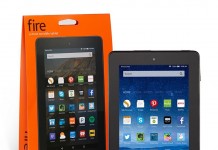QUESTIONS AND SOME ANSWERS ABOUT THE COMING KINDLE LENDING PROGRAM
For basic details of the library lending program, see the original announcement, with the more important portions (in my mind) bold-faced.
ZDNet – Adrian Kingsley-Hughes
ZDNet’s Adrian Kingsley-Hughes had a larger reaction than seen in most columns, most of which just reported details of the announcement with mild surprise.It begins with “This is big. Huge. Massive.”
Kingsley points out (emphases mine):
‘ Amazon has built up a massive digital ecosystem, ranging from books and music and audiobooks to streaming movies and Android software, and this move adds another feature to that ever-growing machine. And best of all for the end user, it’s something that they can take advantage of without having to buy a specific reader since it works with the Kindle app or desktop software. Amazon is using this to further cement the Amazon brand into people’s minds (and what better way to win over the love of readers than to make it easier to get books from a library?), and establish the Amazon Kindle ebook format as a dominant format, while at the same time showing the competition who’s boss. ‘
New York Post – Garett Sloane
Garett Sloane at the New York Post reports:
‘[For example]…at the New York Public Library, if a member orders an e-book, others wait on a list until that digital version is free again.
That list can get awfully long. Yesterday, the most popular title at the NYPL was Harlan Coben’s mystery novel “Caught,” with more than 275 people on the waiting list. ‘
New York Times – Julie Bosman
Julie Bosman reports that “…the New York Public Library said last month that e-book use in its system was 36 percent higherthan it was one year ago.”
As so many have reminded us, Simon & Schuster and Macmillan still don’t allow their e-books to be available in libraries, and HarperCollins (Murdoch) would allow use of an e-book only 26 times before it would have to be re-purchased by the libraries. That hasn’t gone over well with librarians.
From the Comments area of the blog entry on Amazon’s announcement
– a statement by an Overdrive manager
Commenters to this blog have pointed us to interesting articles, one of them a post by Overdrive’s’ manager for content sales,Karen Estrovich (this link often gives a database connection error). On her Overdrive blog, she clarifies for the company’spartners how this would work for them. (Emphases mine.)
‘ The Kindle Library Lending program will integrate into your existing OverDrive-powered ‘Virtual Branch’ website.
Your existing collection of downloadable eBooks will be available to Kindle customers.
[AB here; Within the context of her statement to Overdrive’s partners, this would actually mean “downloadable titles” rather than ebooks in specific format. ]
As you add new eBooks to your collection, those titles will also be available in Kindle format for lending to Kindle and Kindle reading apps. Your library will not need to purchase any additional units to have Kindle compatibility. This will work for your existing copies and units.
A user will be able to browse for titles on any desktop or mobile operating system, check out a title with a library card, and then select Kindle as the delivery destination. The borrowed title will then be able to be enjoyed using any Kindle device and all of Amazon’s free Kindle Reading Apps.
The Kindle eBook titles borrowed from a library will carry the same rules and policies as all our other eBooks.
The Kindle Library Lending program will support publishers’ existing lending models.
Your users’ confidential information will be protected.
The Kindle Library Lending program is only available for libraries, schools, and colleges in the United States. ‘
MY INTERPRETATION of this varies from others’ I’ve seen
Caveat: It’s only my interpretation and nothing more, but I think it has a good basis.
‘ Estrovich is writing to partners who have OverDrive-powered ‘Virtual Branch’ websites for the Overdrive library e-books program. This is important to an understanding of what she’s describing.
The existing collection of a partner’s downloadable titles will be available to Kindle customers.
When the partners add new ebooks to their collections available for loan, those titles will be available in Kindle- and ePUB formats for lending. No one will have to, to my mind, convert from ePUB to Amazon’s mobi format, as some have written — for the reasons given below.
This indicates strongly that the titles in Amazon Kindle/mobi format will be available from Amazon’s serversdirectly once the requirements are met for the loan of a title to a Kindle customer.
It’s the only way Amazon would be able to (1) synchronize between the various Kindle/compatible devices and (2) back up annotations for a customer. This would be done via matching the server’s usual Amazon-formatted e-book and the copy on the customer’s Kindle.
The partners’ libraries will not need to purchase any additional units as the partners are purchasing TITLES from a publisher via Overdrive, and the partners can decide which format a customer will get, depending on the customer selection of “destination” device. Again, no conversion would be needed. Amazon wouldn’t be using ePUB-formatted books that are transformed, nor would ePUB books be affected.
Most important, this would mean the partners’ existing copies and units would continue to work, as-is, totally unaffected.
The reason is that the Kindle ebooks would be handled (and sync’d and backed up) by Amazon servers. The delivery of the Kindle format books to Kindle customers would not affect the ePub books in the overall collection one iota. The e-books that Overdrive partners offer will be available in both formats.
There would still be DRM involved in the library loan but probably Amazon’s DRM rather than Adobe’s. I think that Amazon resisted partially because they don’t want to pay Adobe for their DRM process when they have their own (and apparently they don’t want to switch to ePub).
This would be a better solution than most had expected. ‘
An analysis by Mike Cane
Peter Brantley, of Internet Archive —
in his “Reading 2.0” at posterus.com (“Musings on the publishing revolution” — reposts most of a typically colorful and on-point analysis of the Kindle vs ePub battle by Mike Cane.
Brantley’s alert asks “Does kindle library lending obviate the market need for epub as a format?”
and Mike Cane’s title is the more provocative: “Kindle Library Lending: ePub Is Dead”
Via Andrys Bastens’ A Kindle World Blog

































Well, if you’re going to come late the library e-book thing, you better come with something better than what has been available and Amazon has certainly done that.
Being able to annotate and have your notes available if you borrow the book again or purchase it from Amazon is a HUGE step up.
Being able to download a library book on any device with a K app ain’t bad either.
99% of all mainstream readers have no interest in notes or making notes or keeping notes.
Garett Sloane’s comment on 275 people in the waiting list is interesting. Who will decide how many copies will be lent at one time ? The Library or Amazon ?
I personally believe that this whole library-borrowing-model is a hang over from the paper printing world. The future of publishing and eBooks will not include this practice as a significant practice in, say, 10 years.
I hope Amazon does a better job formatting library books than Kobo using Adobe Digital Editions. I’ve checked three ebooks from my local library and while the book is on the device and showing test, the extra double wide margin on both sides make for an unpleasant reading experience. I returned the books unread. The problem, I think, comes from publishers setting the margin in the EPUB file and the device will use that setting even if it doesn’t make sense on a small screen. I guess some readers don’t mind this type of formatting gaff, but I do. Maybe Amazon can do it right since it’s already (most likely) going through a conversion process from EPUB to Kindle.
Greg,
What I described (if that’s how they’ll do it and I think they will because Amazon needs its own format in order to sync and back up annotations for the borrowing customer) doesn’t involve a conversion from ePub to Kindle (mobi) format.
Libraries even already offer mobi-formatted books, but now Amazon is ‘in’ and can deliver the e-book title that is ordered and paid for by the library via Overdrive, in the format the customer chooses.
The process with Overdrive, the publishers and the library is one library ebook-title purchase for loaning = 1 copy out. A library might order two. Which format is delivered would depend on what the customer selects as ‘destination’ device.